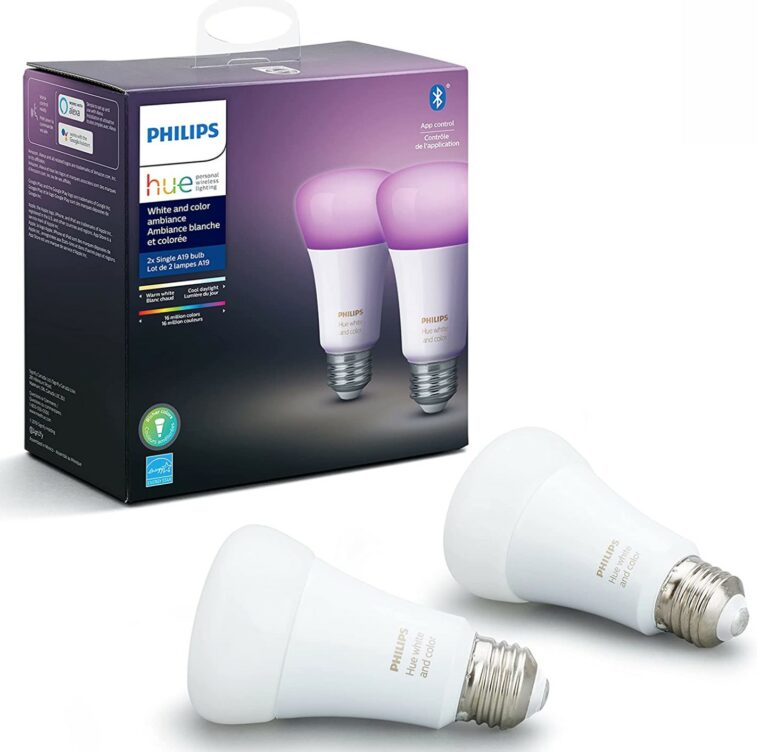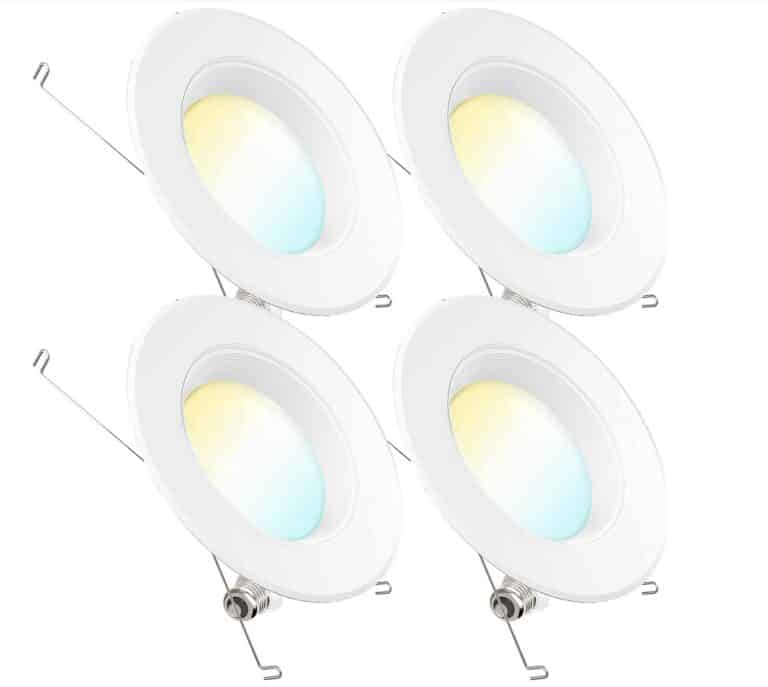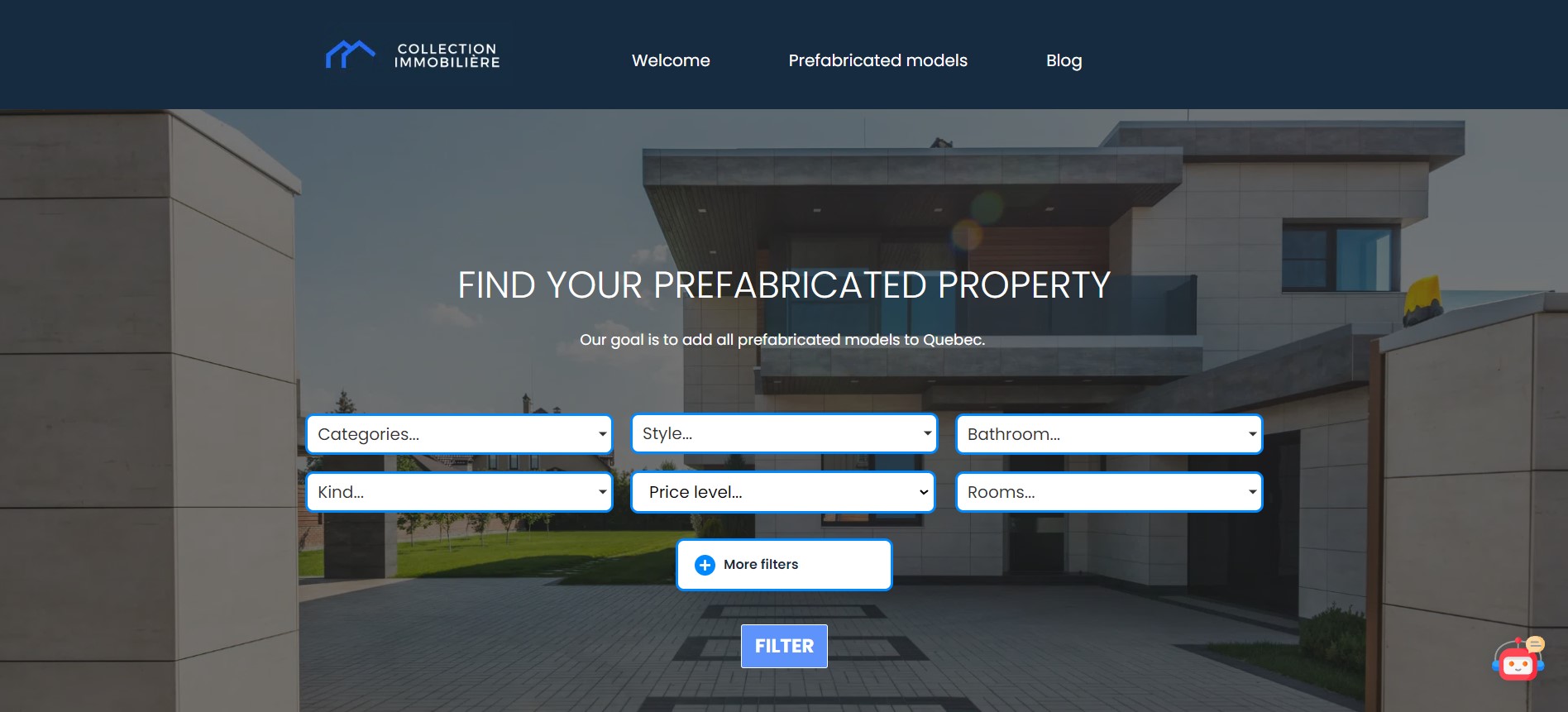Lighting Is a Game-Changer in any Office Setting!
The unsung hero can make or break the productivity, comfort, and overall well-being of your employees.
And let’s face it, every little advantage counts in today’s fast-paced world. So why not give your team the gift of optimal lighting?
This blog post will dive into the world of office lighting and how it can supercharge your employees’ productivity.
We will explore the different types of lighting and how they can be used to create a visually stunning, yet functional office space. From ambient lighting that sets the tone for the entire space, to task lighting that illuminates the areas where the real work gets done, and accent lighting that highlights the beauty of your office’s design.
We will also discuss the magic of color temperature and how it can affect the mood and atmosphere of the space. We will show you how different color temperatures can be used to create a warm and inviting atmosphere during the day and a cool and focused environment at night, depending on the intended use of the office.
Additionally, we will talk about the importance of control and adjustability of the lighting, the value of energy efficiency, and the impact of natural light in the office.
In short, this blog post is all about how lighting can elevate your office and your employees’ performance to new heights.
Step 1: Identify the Purpose of the Space
Identifying the purpose of the space is the first step in designing a lighting plan. It is essential to understand the intended use of the space and the activities that will take place there to create a lighting plan that is appropriate and functional.
When determining the purpose of the space, it’s important to consider the activities that will take place there, such as workstations, presentations, meetings, and other activities. This will help you to understand the type of lighting that is needed for the specific activities in the space. For example, a space used primarily for workstations will require task lighting that is bright and directed towards the work surface, while a space used for presentations or meetings will require a different type of lighting that is more diffuse and creates a more relaxed atmosphere.
In addition to the activities that will take place in the space, it’s also important to consider the mood or atmosphere you want to create. The type of lighting used can greatly affect the mood of a space. For example, warm lighting can create a cozy and inviting atmosphere, while cool lighting can create a more modern and sleek look.
In a nutshell, the purpose of the space is the main driver for the design of the lighting plan, it is important to take into account the activities that will take place and the atmosphere you want to create.
Step 2: Understand the Different Types of Lighting
Understanding the different types of lighting is an important step in designing a lighting plan.
According to Dr. Pragya Agarwal in a Forbes article, often just 13-15 mins of exposure to natural light is enough to trigger the release of endorphins or “happy hormones.“
She also reveals that personalized lighting options can help create more inclusive work environments.
This way the employees feel more in control of their work environments, which has been shown to increase their levels of happiness and productivity in the workplace.
We will explore the way to use natural light in the next step, but for now, let’s look at what are the different types of lights.
In general, there are three main types of lighting: ambient lighting, task lighting, and accent lighting. Each type of lighting serves a specific purpose and can be used in combination to create a well-lit and functional space.
In this section, we will explore each type of lighting in more detail, providing an in-depth understanding of how they can be used in different spaces and how they can be combined to create a functional and visually appealing environment.
Ambient Lighting
Also known as general or background lighting, it provides overall illumination for a space. It is the foundation of a lighting plan and is used to create a comfortable and safe environment.
Ambient lighting can be provided by natural light or artificial light sources such as ceiling fixtures, wall sconces, and lamps.
In an office setting, ambient lighting can be provided by a combination of natural light and artificial light sources.
For example, large windows or skylights can provide natural light during the day, while ceiling fixtures or wall sconces can provide ambient lighting at night or on cloudy days.
When it comes to artificial light sources, some examples of ambient lighting for an office include:
Philips Hue Ambiance A19 Smart LED Bulb: This bulb is compatible with Amazon Alexa and Google Assistant, can be dimmed, and can change colors according to your preference, providing a warm and inviting atmosphere in the office.
Sunco Lighting LED 6-Inch Recessed Downlight: This type of recessed lighting is a great option for ambient lighting in an office, it provides a bright and even light, and it is energy efficient.
It’s important to keep in mind that ambient lighting should be bright enough to provide a comfortable and safe environment, but not so bright that it causes glare or discomfort.
It’s also important to choose a color temperature that is appropriate for the space, such as warm white for a cozy atmosphere or cool white for a more modern and sleek look.
Task lighting
Task lighting is a type of lighting that is used to illuminate specific areas or tasks in space. It is directed light that helps to improve visibility and reduce glare in areas such as workstations, reading areas, and task-oriented spaces. Task lighting is designed to provide a bright and even light in the task area, which improves visibility, reduces eye strain and fatigue, and increases productivity.
Several types of task lighting can be used in an office setting, including:
- Desk lamps: These lamps are designed to be placed on a desk or work surface and provide direct and focused light on the task area. Desk lamps can be adjusted to shine light in different directions and can be moved around easily.
- Under-cabinet lighting: This type of lighting is installed underneath cabinets or shelves and provides a bright and even light on the task area. It’s a great option for illuminating workspaces, such as a kitchen or a home office.
- Track lighting: This type of lighting is installed on a track and can be adjusted to shine light in different directions. Track lighting can be a great option for illuminating workstations, art pieces, or other task-oriented areas.
- Recessed lighting: This type of lighting is installed in the ceiling and shines light downwards. Recessed lighting can be a great option for providing task lighting in areas such as a home office, library, or study.
When it comes to task lighting, it’s important to consider the following factors:
- Brightness: Task lighting should be bright enough to improve visibility and reduce glare, but not so bright that it causes discomfort or eye strain.
- Direction: Also, it should be directed towards the task area, providing a bright and even light on the task area.
- Adjustability: Furthermore, it should be adjustable, allowing you to adjust the direction and brightness of the light as needed.
- Energy efficiency: It’s important to choose energy-efficient light sources to minimize energy consumption and help reduce the environmental impact.
By providing task lighting in specific areas or tasks, you can create a well-lit and functional office space that is comfortable, safe, and visually appealing, and that helps to improve productivity.
Accent Lighting
Accent lighting is a type of lighting that is used to highlight specific features or artwork in a space. It is used to draw attention to certain elements of a room and create a sense of drama or interest.
This kind of lighting is typically used to highlight artwork, sculptures, architectural features, or other decorative elements in a space.
Accent lighting is often used in conjunction with other types of lighting, such as ambient and task lighting.
It can be used to add visual interest to a space and create a sense of depth and dimension.
Accent lighting is typically focused and directed, and can be achieved through the use of spotlights, track lighting, or recessed lighting.
Some examples of accent lighting are:
- Track lights that focus on a single piece of art
- A spotlight that shines on a sculpture
- LED strip lights under a bookshelf to showcase objects
- Recessed lights that highlight an architectural feature like a fireplace
Accent lighting can be used to create a focal point in a room and add visual interest to a space. It can also be used to create a sense of drama and mood in a room.
What Kind of Lights Should I Use for a Business Office?
The color temperature of light is an important factor to consider when designing a lighting plan for an office. The color temperature of a light source is measured in Kelvins (K) and can range from warm white (2700K – 3000K) to cool white (5000K – 6500K).
Each color temperature creates a different mood or atmosphere in the space, so it’s important to choose a color temperature that is appropriate for the intended use of the office.
For example, Warm white lights (2700K – 3000K) are recommended for creating a cozy and inviting atmosphere. This type of light is often used in spaces where a relaxed and comfortable environment is desired, such as in a home office or a reception area.
On the other hand, cool white lights (5000K – 6500K) are more suitable for creating a more modern and sleek look. This type of light is often used in spaces where a higher level of concentration and productivity is desired, such as in a traditional office or a library.
The color temperature can also be adjusted based on the time of day. For example, warmer color temperatures can be used during the day to create a relaxing and comfortable atmosphere, while cooler color temperatures can be used at night to create a more focused and productive environment.
It’s also important to keep in mind that different types of work or activities require different types of lighting. For example, if you have a home office or shared office space, you may want to have different light settings depending on the task. For instance, you may want to have a warmer color temperature for reading or relaxing, and a cooler temperature for computer work or video conferencing.
In summary, the color temperature of the light is an important factor to consider when designing a lighting plan for an office. It can greatly affect the mood and atmosphere of the space, so it’s important to choose a color temperature that is appropriate for the intended use of the office and adjust it based on the time of day or the task.
Step 3: Consider the Natural Light
Natural light is a valuable resource that can be used to supplement or enhance artificial lighting. The amount and direction of natural light that enters the space can affect the type and placement of artificial lighting. For example, if a space has a lot of natural light, less artificial light may be needed.
Here are a few ways natural light can be incorporated into an office design:
- Skylights: Skylights are a great way to bring natural light into an office space. They can be installed on the roof of a building and can provide a significant amount of natural light, even in areas that are not adjacent to windows.
- Floor-to-ceiling windows: Large windows that run from floor to ceiling can provide a lot of natural light and can be a great way to bring the outdoors inside.
- Solar tubes: Solar tubes are a compact and cost-effective way to bring natural light into an office space. They are small tubes that are installed on the roof of a building and bring natural light into the space through a small diffuser on the ceiling.
- Light wells: Light wells are a type of architectural feature that allows natural light to enter a building. They are typically installed in the center of the building and can bring natural light into the center of the space.
- Green roofs and walls: Green roofs and walls are a great way to bring natural light into an office space. They can also improve air quality, reduce energy costs, and provide a pleasant view for employees.
Overall, incorporating natural light into an office design can provide a range of benefits, including improved visibility, reduced energy costs, and a more pleasant working environment. It’s worth considering the different options available and incorporating them into the office design where possible.
Step 4: Plan your Lighting Layout
A plan of the space can be used to sketch out a rough layout of where lights will be placed. This will give you an idea of how many lights you will need and where they should be placed. This step is important to ensure that all areas of the space are properly lit and that there are no dark spots or glare.
Creating the perfect office lighting is where you get to take all the information you’ve gathered so far, and start bringing it to life.
When planning your lighting layout, you want to make sure that every inch of the space is illuminated in a way that is both functional and beautiful.
This step is all about creating a balance between ambient, task, and accent lighting (as seen in step 2) to ensure that every area of the office is properly lit and that there are no dark spots or glare.
For example, you may want to place ambient lighting in the center of the space, task lighting over the workstations, and accent lighting to highlight artwork or other key features. This will create a cohesive and visually stunning space that is also functional and productive.
Additionally, it’s important to consider the impact of natural light and how it can be used to supplement or enhance artificial lighting. By taking into account the direction and intensity of natural light, you can place the lights in a way that maximizes their effectiveness and reduces energy costs as we’ve said previously.
The key to a successful lighting layout is to think creatively and not be afraid to experiment with different configurations until you find the perfect balance.
This step is your chance to bring your vision to life and elevate the office to new heights of functionality and beauty. So go forth, take your plan, and let your creativity soar!
Step 5: Select the Lights
This is where the real fun begins!
This is where you get to choose the specific lights that will bring your office to life. It’s where form meets function, and where you get to make all your hard work come to fruition.
When it comes to selecting the lights, it’s important to take into account the purpose of the space, as well as the layout you’ve planned out in step 4.
Different types of lighting will have different functionalities, so it’s important to choose lights that align with the activities that will take place in the office.
For example, if you want to create a warm and inviting atmosphere, you may want to choose lights with a color temperature of 2700K, whereas if you want to create a more energizing atmosphere, you may want to choose lights with a color temperature of 4000K.
The GetInLight 3 Color Levels Dimmable LED has a temperature Slide Switch, allowing selection among 3 color levels, Warm White (2700K), Soft White (3000K) & Bright White (4000K).
Another important consideration is energy efficiency. With energy costs on the rise, it’s important to choose lights that are energy-efficient and will help keep your energy bills low.
It’s also important to choose lights that are compatible with other equipment in the space such as cameras or projectors. This will ensure that the lighting is not interfering with other equipment and causing any issues.
When it comes to selecting the lights, remember that it’s not just about the functionality, but also the aesthetics. You want to choose lights that are not only functional but also beautiful, which will elevate the office to new heights of beauty and functionality.
This step is where you get to choose the specific lights that will bring your office to life and make it a place that is both productive and beautiful. So go forth and choose your lights with passion, and let your office shine!
Step 6: Install the Lights
This is where all your hard work and planning come together and your office begins to take shape.
Once the lights are selected, it’s time to install them according to the layout you’ve planned out in step 4. This is a crucial step as it ensures that all areas of the space are properly lit and that there are no dark spots or glare.
Installation of lights requires the right tools and skills. It’s important to ensure that the lights are properly installed and that all the necessary safety precautions are taken (see the safety guides below).
This is also a good time to test the lights and make any necessary adjustments. This step is where you get to see the fruits of your labor and make any final tweaks to ensure that the office is perfectly lit.
But installing the lights is not just about functionality, it’s also about aesthetics. The way the lights are installed can greatly impact the overall look and feel of the office. So, be sure to pay attention to the details making sure that they are not only functional but also beautiful.
Installing the lights is where the real magic happens, and it’s an exciting step in the process of creating the perfect office. So go forth and install those lights and watch your office come to life!
What Should you Be Careful With When Installing the Lights?
When installing lights, there are a few things to be careful with to ensure that the installation is safe and effective.
- Safety: Always make sure to follow proper safety procedures when installing lights. This includes wearing safety gear, such as gloves and eye protection, and following any instructions provided by the manufacturer.
- Electrical Safety: Make sure to turn off the power before installing lights, and double-check to ensure that the power is off before handling any electrical components.
- Compatibility: Ensure that the lights you are installing are compatible with the existing electrical system in the office. This includes making sure that the lights are the correct voltage and that they are compatible with any dimmer switches or other electrical devices in the space.
- Placement: Be careful with the placement of lights to ensure that they are not too close to flammable materials and that they are not placed in areas where they can be easily knocked over or damaged.
- Wiring: Make sure that the wiring is done properly and that all connections are tight and secure. This will help to prevent any issues with the lights later on.
- Proper Maintenance: Make sure to regularly maintain the lights and replace any bulbs or parts as needed to keep the lights working properly.
By being mindful of these considerations, you can ensure that your office lighting is installed safely and effectively and that it will provide optimal illumination and efficiency for years to come.
When Should you Let the Job to an Electrician?
There are several situations where it may be best to hire an electrician to install or maintain the lights in an office:
- Complex Wiring: If the office has complex electrical wiring, or if the lights need to be connected to a network of other electrical devices, it may be best to hire an electrician to handle the installation.
- Safety Concerns: If there are any safety concerns, such as working with high-voltage electrical systems or handling potentially hazardous materials, it is best to hire an electrician to ensure that the work is done safely.
- Building Codes: If the office is subject to building codes or regulations, an electrician should be hired to ensure that the lights are installed in compliance with these codes.
- Difficulty of the Job: If the job is difficult or if you are not confident in your ability to safely and correctly install the lights, it is best to hire an electrician to ensure that the job is done correctly.
- Warranty: If the warranty on the lights or electrical components is void if they are not installed by a professional electrician, it’s best to call in one.
By hiring an electrician to handle the installation of lights in an office, you can ensure that the work is done safely, effectively, and in compliance with any applicable codes or regulations.
Step 7: Adjust and Accessorize
Once the lights are installed, it’s time to fine-tune your lighting to create the perfect atmosphere and mood in your space.
Amazon offers a wide variety of dimmers and timers that will help you achieve the desired level of brightness and color temperature.
With their products, you can easily control the brightness of your lights and schedule when they turn on and off, making it easy to create the perfect lighting for any activity.
For example, you can use the Amazon Smart Plug to schedule lights to turn on and off automatically or use the Amazon Echo Dot with a smart bulb such as Philips Hue to control the lights via voice commands.
Furthermore, Amazon also offers various motion sensors such as the Philips Hue Motion Sensor, that can automatically turn lights on and off as you enter and leave a room, which can help you save energy and create a more convenient and efficient lighting experience.
Additionally, you can accessorize your space with color-changing lights such as the LIFX Mini Smart Bulb that can be controlled via the LIFX app, allowing you to change the color of your lights to match any mood or activity.
In conclusion, with Amazon’s wide range of products, you can easily take your lighting to the next level and create the perfect atmosphere and mood in your office space.
Conclusion
In conclusion, understanding and utilizing proper lighting in your office can greatly enhance the productivity and overall atmosphere of the space.
Once you have a grasp on the basics of lighting, you can start to explore other creative office design ideas to further improve the functionality and aesthetic of your workspace.
Some examples may include incorporating greenery, using unique and interesting furniture, and utilizing different textures and materials to create a cohesive and visually interesting environment.
The possibilities are endless, so don’t be afraid to get creative and make your office a space that you and your team will love to work in.
Bibliographic Sources :
- This blog post was written with the assistance of an AI language model, specifically ChatGPT. While the model generated the initial content, it has been extensively revised, edited, and fact-checked by the author to ensure accuracy and compliance with Google’s guidelines. The author takes full responsibility for the final product and any errors or inaccuracies that may remain.
- Dr. Pragya Agarwal. “How Does Lighting Affect Mental Health In The Workplace“ December 2018, FORBES.

















